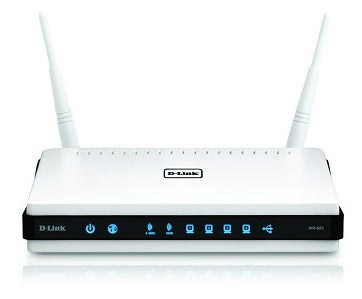Doing more with less has been the goal of business operations for some time
now. Nowhere has this become more evident than with the IT components and
budgets of small businesses. In fact, "more with less" has become the
axiom not only of those small businesses, but also of the solution providers
servicing those businesses. A case in point is the lowly wireless router, a
device that has almost reached commodity status, yet is one of the most
important elements for connecting a small business to the Internet.
D-Link is looking to meet the demands of small businesses with the DIR-825,
the company’s latest entry into the wireless router market and the latest of
its Xtreme N series of products.
The biggest challenge facing D-Link and its competitors is how to make a
product stand out from the pack. After all, over the last few years wireless
routers have grown in features and shrunk in price, yet business owners still
want more.
At $199, the D-Link DIR-825 is near the top of the
price range for a wireless router, but that price starts to make sense in light
of the features included with the unit. Like most wireless routers on the market,
the DIR-825 includes dual-band support for 2.4GHz and 5GHz wireless clients.
That translates to all of the popular Wi-Fi standards, including 802.11 a/b/g
and Draft N.

D-Link really plays up the Draft N support with implications of increased
speed and range, a claim found to have some merit when tested with a DWA-160 USB
2.0 802.11n wireless network adaptor from D-Link. While far short of the
promise of 802.11n, the D-Link DIR-825 with the DWA-860 was able to deliver
throughput approaching 90M bps at a range of about 15 feet indoors. Speed
dropped down to around 50M bps when tested from about 150 feet from outside the
building. While performance and speed are important, it is some of the other
features that will help to make the DIR-825 worth consideration, namely the
addition of D-Link’s SharePort Technology, which basically allows a USB
device such as a printer or hard drive to be plugged directly into a USB
port on the router. That feature can make the sharing of peripherals a little
easier in peer-to-peer network environments.
Solution providers should take note of SharePort, because it can clearly drive
add-on integration and product sales. For example, a USB
storage device can be added to the network and used for backup or archiving,
functions that have become increasingly important to small businesses, yet are often
ignored. For those already using D-Link routers, it is worth noting that
SharePort is available for a few existing devices by simply updating the
firmware.
